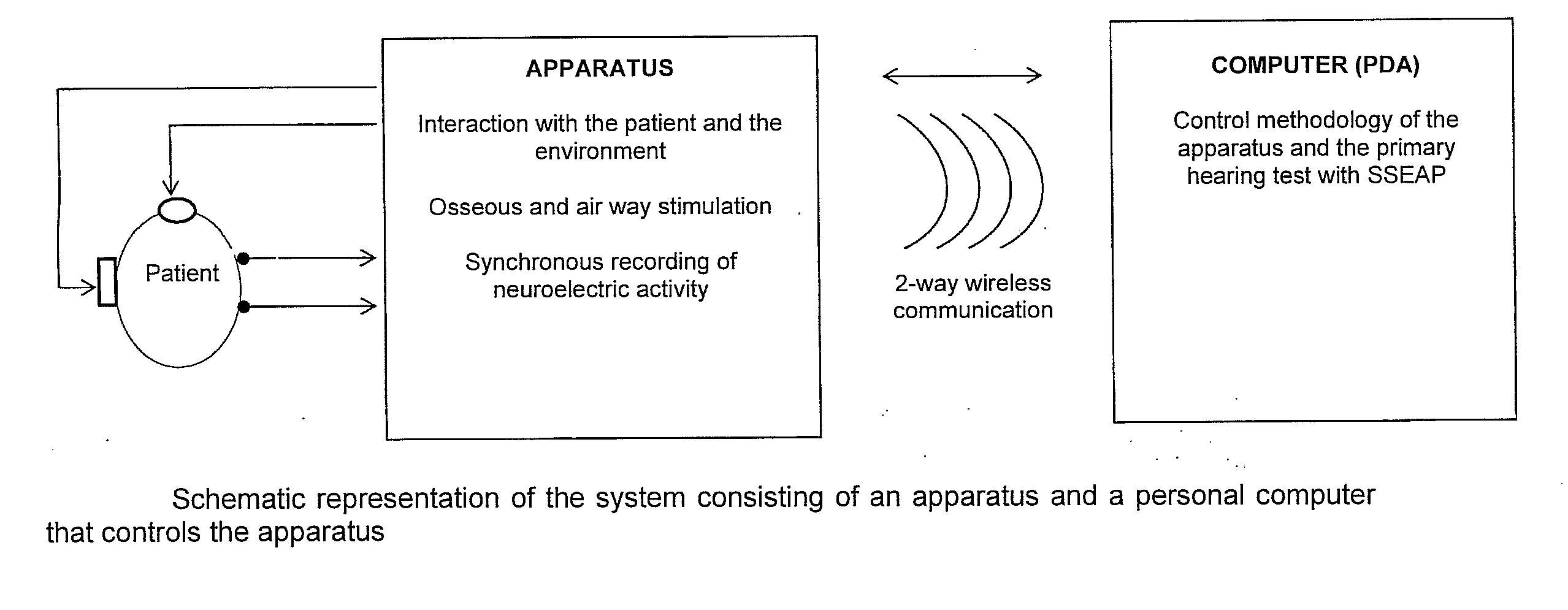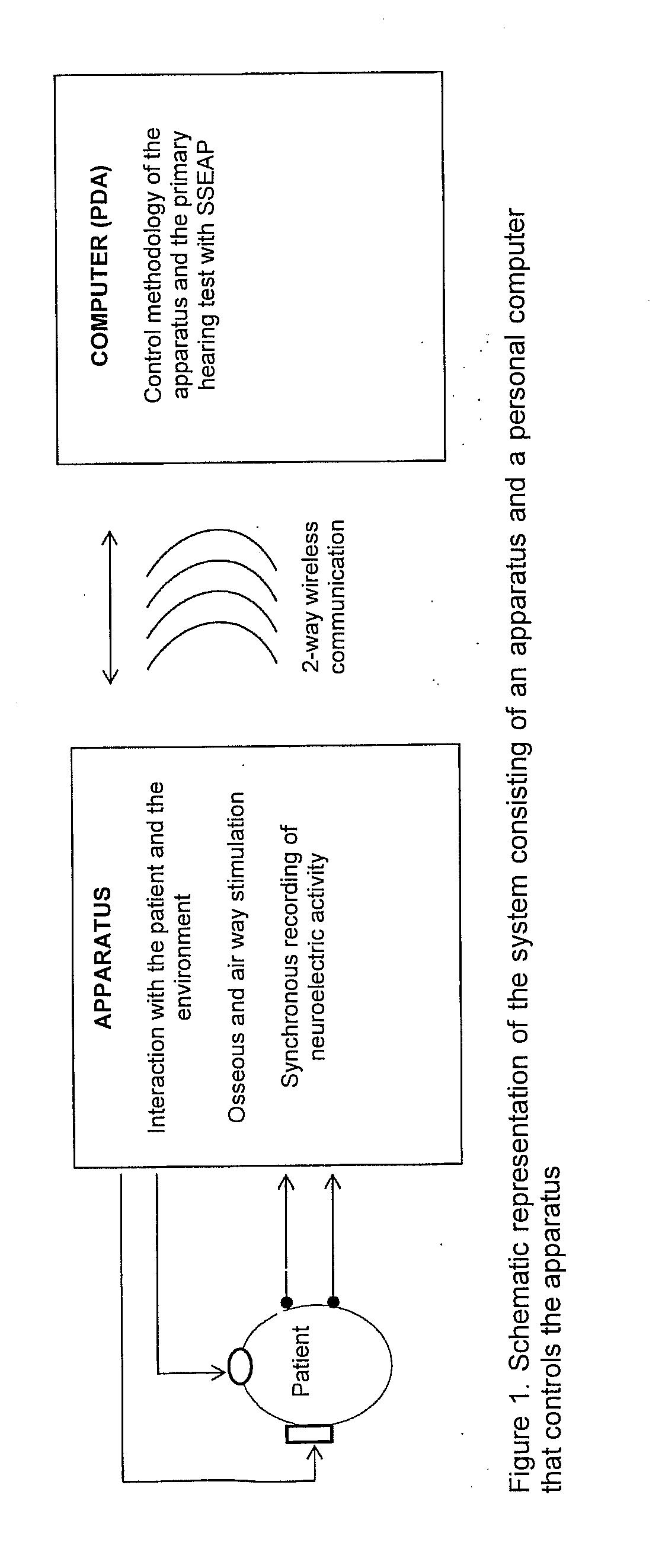Method and Apparatus for the Objective Detection of Auditive Disorders
- Summary
- Abstract
- Description
- Claims
- Application Information
AI Technical Summary
Benefits of technology
Problems solved by technology
Method used
Image
Examples
Embodiment Construction
[0009]The object of this invention is to propose a method and an apparatus, automated and easy to operate, that—through the recording and analysis of steady state evoked auditory potentials—allows to discriminate between the normal and abnormal hearing, identifying, in this latter case, whether the hearing disorder is of a conductive or sensorineural type.
[0010]In order to use the multiple SSEAP technique in the Neonatal Screening Programme to discriminate the type of hearing disorder (if any), an apparatus and a method are proposed, integrating the following elements: 1) means to independently generate two different continuous acoustic stimuli and to present them simultaneously to the patient through electro-acoustic bone and air transducers at different intensities; 2) means to measure the ambient noise and, on the basis of the level measured, to regulate the execution of the screening test and the intensity of the air way stimulation; 3) means to evaluate on an on-going basis the...
PUM
 Login to View More
Login to View More Abstract
Description
Claims
Application Information
 Login to View More
Login to View More - R&D
- Intellectual Property
- Life Sciences
- Materials
- Tech Scout
- Unparalleled Data Quality
- Higher Quality Content
- 60% Fewer Hallucinations
Browse by: Latest US Patents, China's latest patents, Technical Efficacy Thesaurus, Application Domain, Technology Topic, Popular Technical Reports.
© 2025 PatSnap. All rights reserved.Legal|Privacy policy|Modern Slavery Act Transparency Statement|Sitemap|About US| Contact US: help@patsnap.com



